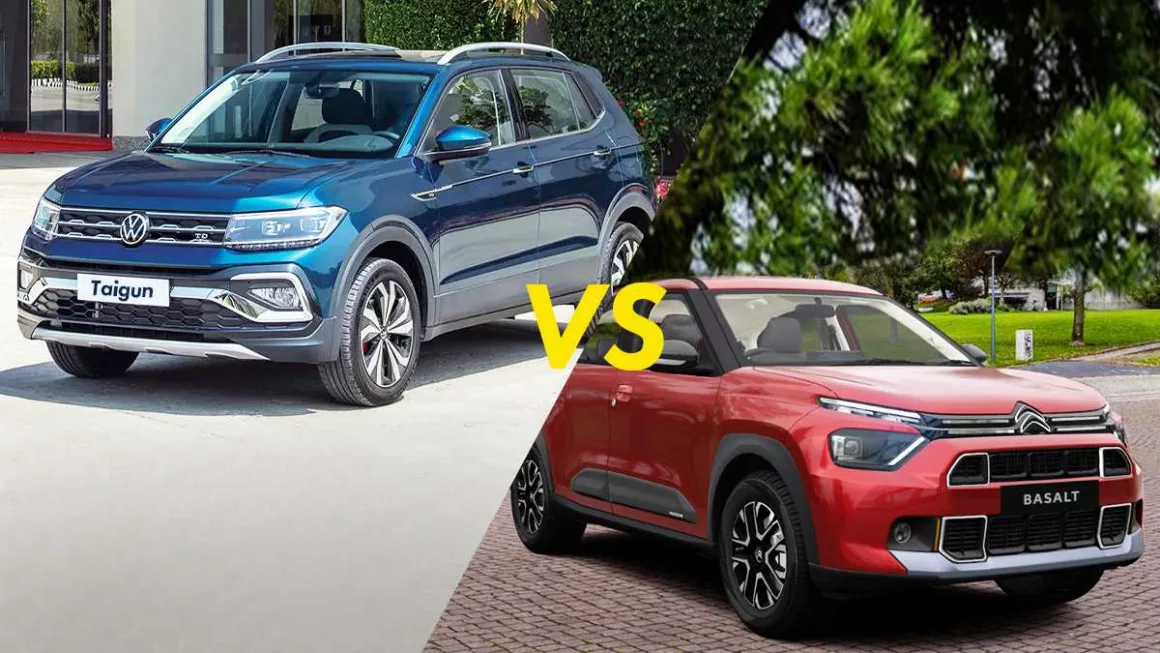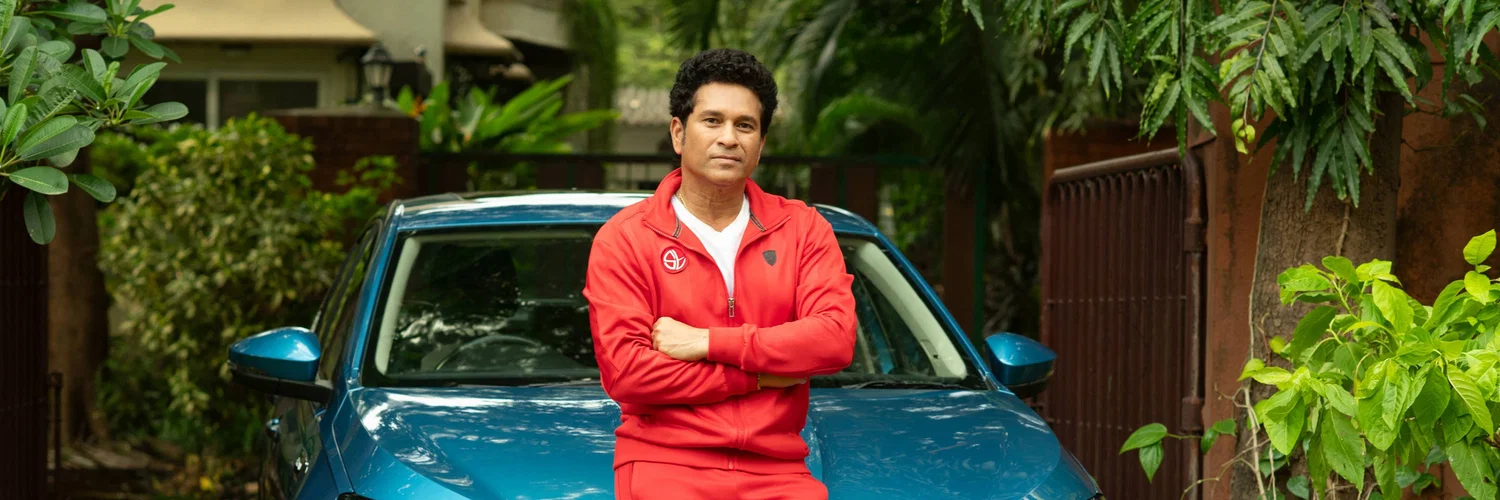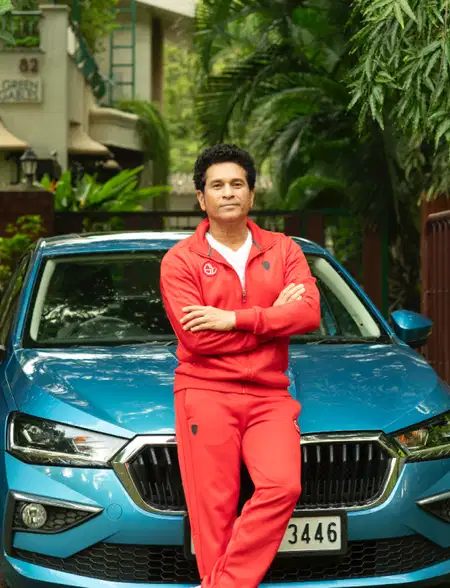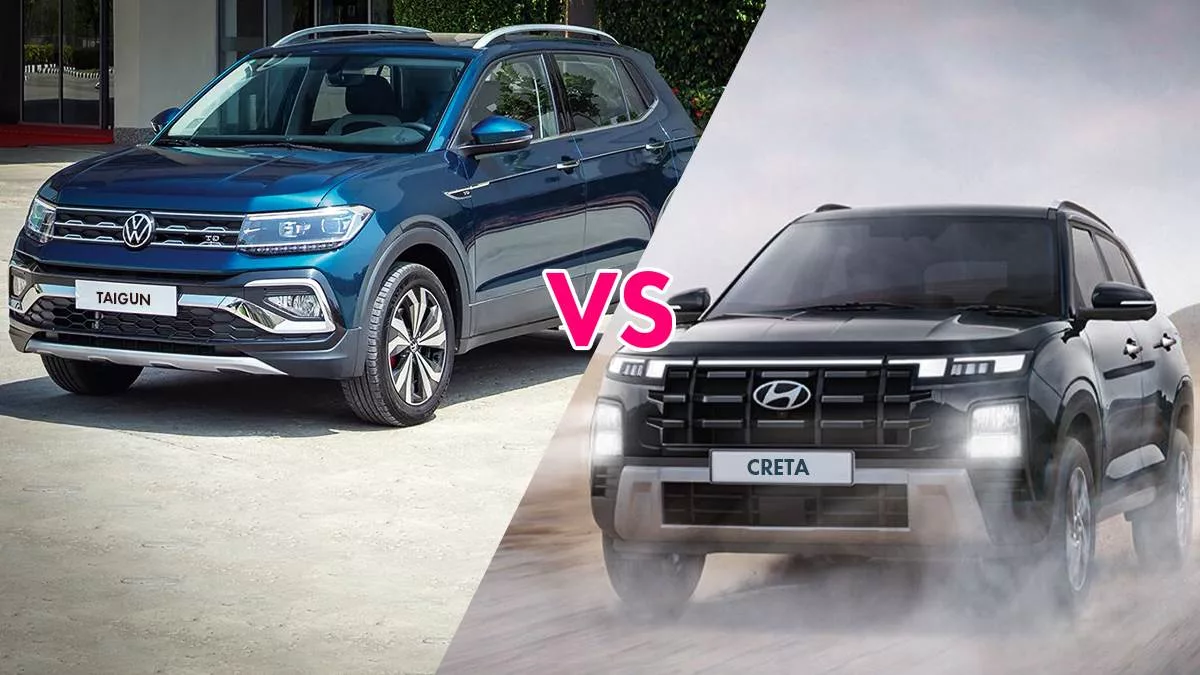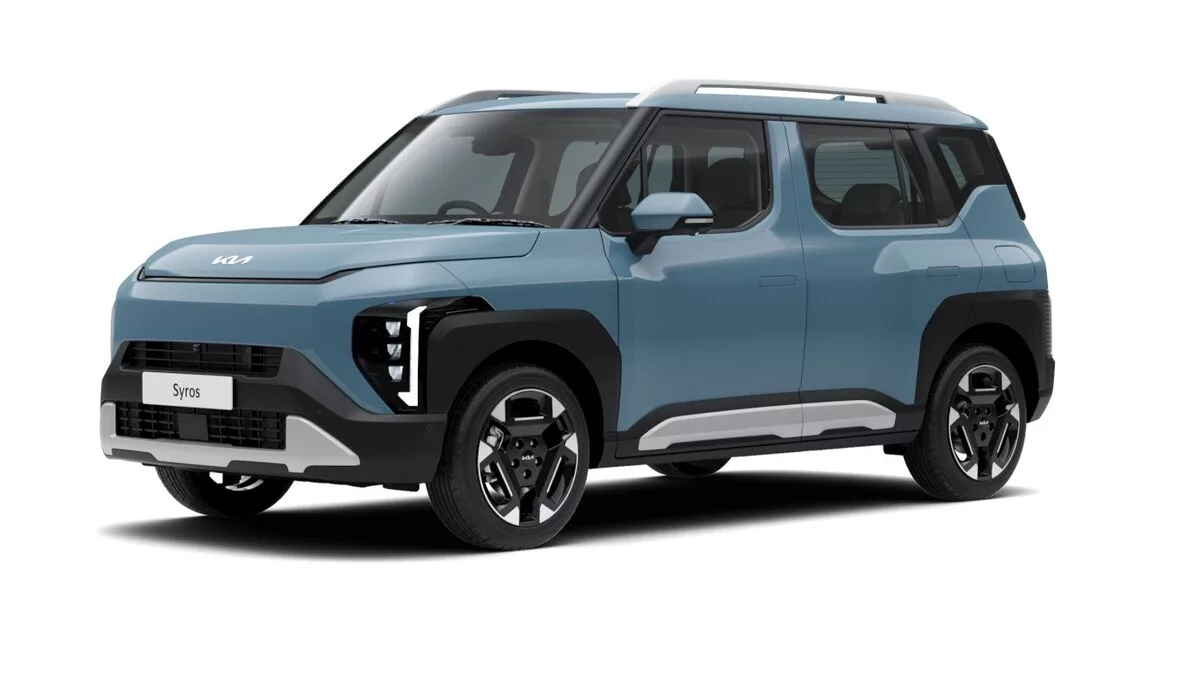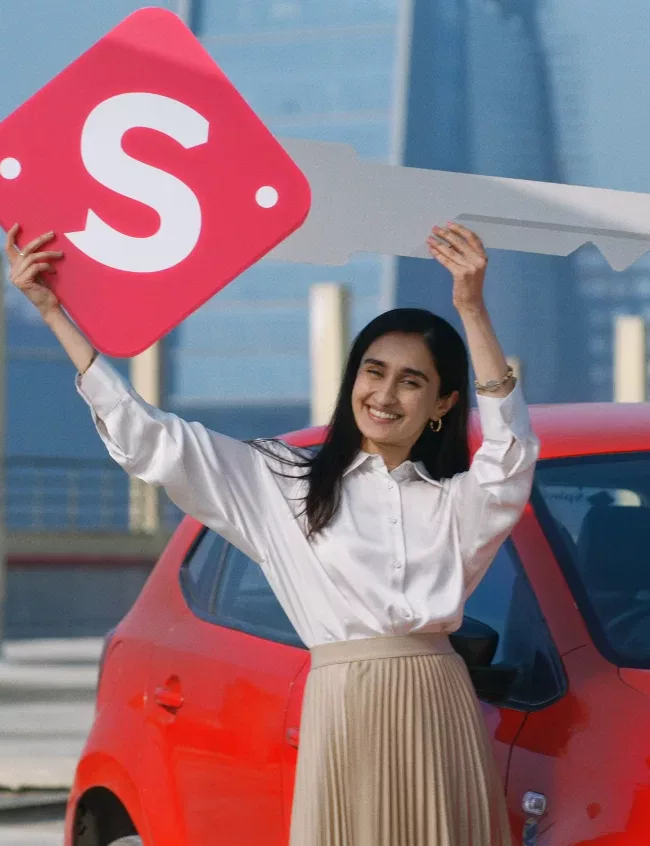Even though Citroen has been in India for the last three years, it’s fair to say the French carmaker is still struggling to find its feet. A possible reason for this is that despite offering excellent ride comfort, Citroen cars aren’t as feature-rich as their rivals. To counter this, Citroen played the value card by keeping its cars considerably more affordable than their rivals, but that didn’t work out.
Now, the carmaker has tried something completely new and launched the first mass-market Coupe SUV, Citroen Basalt. Compared to other Citroen cars, the Basalt is closer to its rivals in feature wealth. However, among all its rivals, cars like the Hyundai Creta and Grand Vitara are far too established and still significantly more feature-packed. Factoring in the turbo engine and features of the Basalt, the Volkswagen Taigun appears as its most fitting rival in the mid-size SUV segment. Therefore, in this comparison of Volkswagen Taigun vs Citroen Basalt, we compare both these cars in key departments so that you can decide which one you should put your money on.
Volkswagen Taigun vs Citroen Basalt: Dimensions & Design
Volkswagen Taigun | Citroen Basalt | |
Length | 4,221 mm | 4,352 mm |
Width | 1,760 mm | 1,765 mm |
Height | 1,612 mm | 1,593 mm |
Wheelbase | 2,651 mm | 2,651 mm |
Ground Clearance | 188 mm | 180 mm |
Boot Space | 385 litres | 470 litres |
With a Coupe SUV design, the Citroen Basalt is almost as large as the Volkswagen Taigun. Mentioning the tiny differences, the Basalt is 131 mm longer and 5 mm wider than the Taigun. Whereas, the Taigun is 19 mm taller and rides 8 mm higher than the Basalt. With the wheelbases of both cars being the same, both offer more or less the same legroom. However, the 470-litre boot space of the Basalt is better than the 385-litre boot space of the Taigun. As far as seating capacity is concerned, both Basalt and Taigun are good four-seaters and manageable five-seaters.
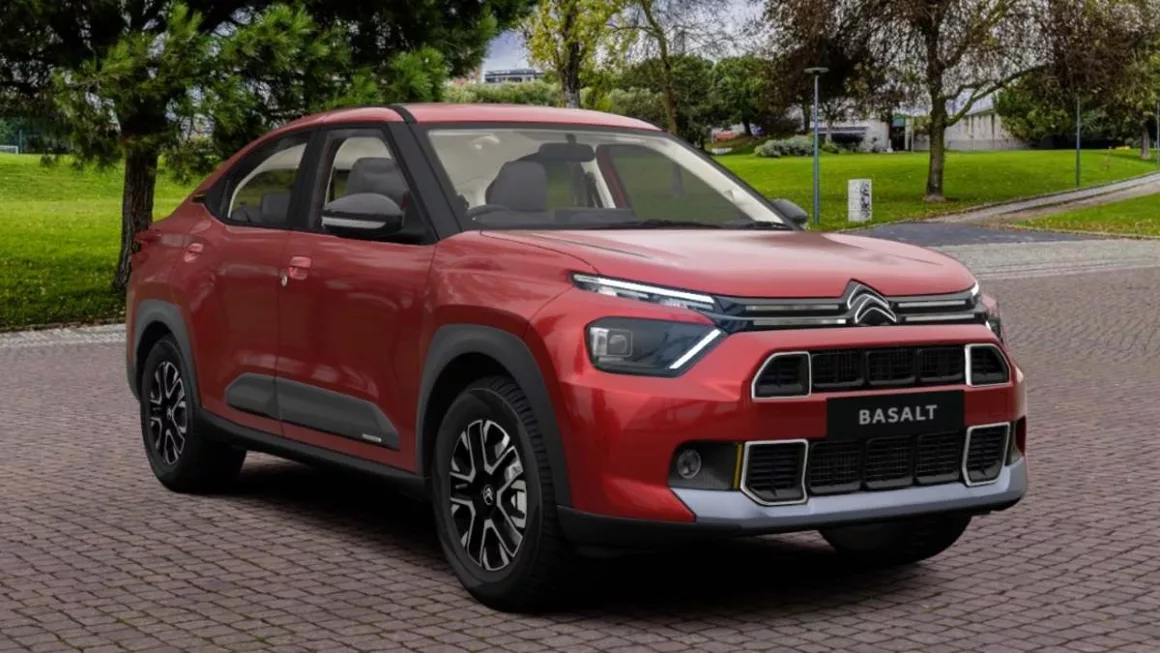
The face of the Basalt is almost identical to that of the car it’s based on – Citroen C3 Aircross. There is the same chromed double chevron logo, split headlamp setup, and V-shaped placement of the LED DRLs. The grille section has two chromed parallel slats with a chunky open area lower down for the air intake. The side profile is where the Basalt differentiates itself from the C3 Aircross and all midsize SUVs. In traditional Coupe SUV fashion, the roof slopes towards the rear and seamlessly merges into the tailgate and there is black cladding on gates, adding some muscles. At the back, it gets stylish stubby wraparound tail lamps with a chunky dual-tone bumper.

Like the Basalt, the Taigun wears a rather sophisticated design with some muscular elements. The front end features a three-slat chrome grille, which houses a VW logo in the middle and seamlessly merges into the large headlamp assemblies. On the bumper, VW has generously used chrome, which is said to have been done to suit the Indian taste. Now, since the Taigun is among the mid-size SUVs, it certainly is more upright than the Basalt. The Taigun’s most stylish section is its tail-end, where the LED tail-lamps are linked by a functional light bar and this whole assembly is nestled in a futuristic-looking glass panel.
Both Citroen Basalt and Volkswagen Taigun are almost equally spacious five-seaters, while the Basalt offers a large boot space. Meanwhile, the choice between the designs is entirely subjective. The Basalt is undoubtedly a fashionable Coupe SUV, whereas the Taigun being a mid-size SUV is more upright and looks more elegant than muscular.
Also read: Comparison: Tata Curvv vs Citroen Basalt
Volkswagen Taigun vs Citroen Basalt: Engine & Transmission
Volkswagen Taigun | Citroen Basalt | |
Engine | 1 litre turbo petrol engine 1.5 litre turbo petrol engine | 1.2 litre NA petrol engine 1.2 litre turbo petrol engine |
Power | 115 PS 150 PS | 82 PS 110 PS |
Torque | 178 Nm 250 Nm | 115 Nm 190 - 205 Nm |
Transmission | 6-Speed Manual for both engines 6-speed torque converter for 1 litre engine 7-speed DTC automatic for 1.5 litre engine | 5-speed manual gearbox with NA petrol engine 6-speed manual gearbox & 6-speed torque converter automatic with turbo petrol engine |
Mileage | 17.2 – 19.2 km/l | 18 – 19.5 km/l |
As can be seen, both turbo petrol engines of the Taigun are more powerful than Basalt’s petrol engine, which is available in both naturally aspirated and turbocharged forms.
When it comes to performance, the Taigun is the one which you would like more. As a matter of fact, it’s one of the best fun-to-drive mid-size SUVs in the market. While its smaller engine generates enough power to deliver an exhilarating drive, the larger 1.5-litre TSI engine offers the most enjoyable high-octane performance and most entertainment behind the wheel. This engine is complemented well by a dual-clutch transmission, which is the sportiest transmission. What’s also nice is that it maintains a great balance between driving fun and ride comfort, and comfortably smothers all bumps and jerks. Meanwhile, the 1.5-litre TSI engine comes with cylinder deactivation technology, which shuts off two cylinders under less stressful conditions and thus delivers better mileage.
On the other hand, while the Basalt (turbo) is not as exciting to drive as the Taigun, it certainly is as easy to drive, handles well, and offers great ride comfort. Its Aisin-sourced torque converter automatic transmission seamlessly shifts gears. However, its naturally aspirated engine, which is only mated to the manual transmission, produces insufficient power for a car of its size, and you might need to downshift to get more power at lower speeds.
Volkswagen Taigun is more exciting to drive and maintains a nice balance between ride and handling. Meanwhile, producing considerably less power than the Taigun, the Basalt delivers equally good handling and ride comfort, if not better.
Volkswagen Taigun vs Citroen Basalt: Features & Comfort
Volkswagen Taigun | Citroen Basalt | |
Infotainment system | 10.1-inch touchscreen infotainment system | 10.2-inch touchscreen infotainment system |
Music system | 6-speaker Volkswagen inbuilt music system | 6-speaker sound system |
Climate control | Automatic | Automatic |
Ventilated seats | Front ventilated seats | Not available |
Adjustable steering | Tilt and telescopic | Tilt |
Drive modes | Not available | Not available |
Instrument cluster | 8-inch digital instrument cluster | 7-inch digital instrument cluster |
Sunroof | Single pane sunroof | Not available |
Adjustable seats (manual or electric) | Powered front seats | Manual adjustment for driver seat |
Rear AC vents | Available | Available |
60:40 rear seat split | Available | Not Available |
Cruise control | Available | Not Available |
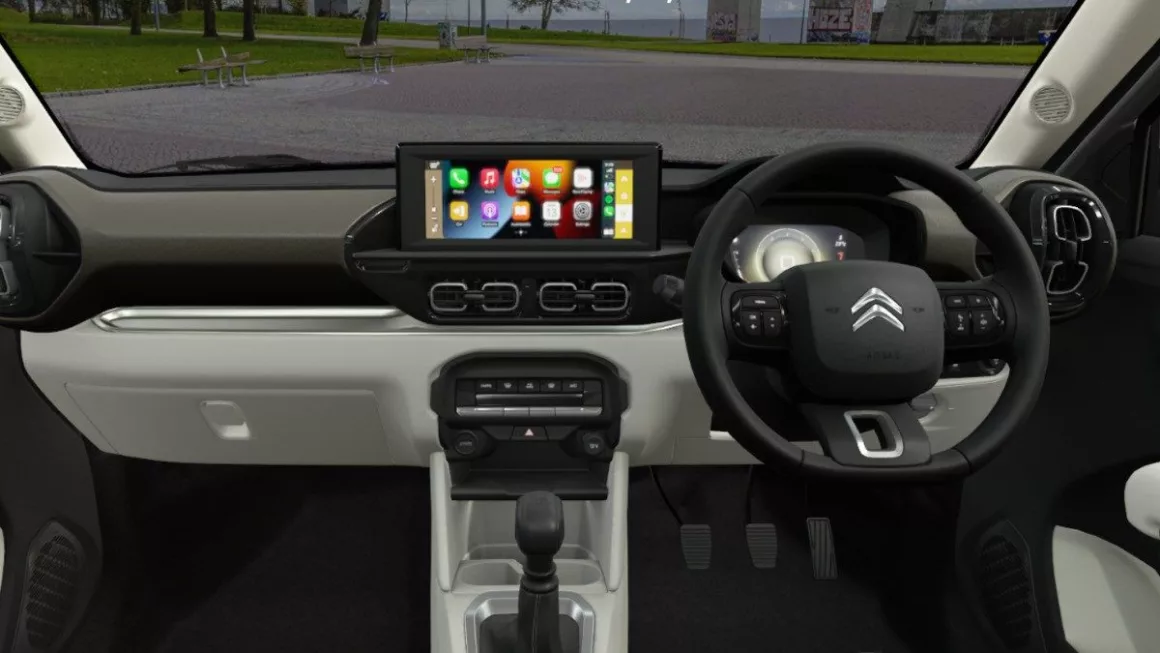
Both these cars offer vastly different interior experiences. Starting with the Basalt, it shares its interior with the Citroen C3 Aircross. In its dual-tone black and beige theme, beige covers the seats while the black is limited to doors and the dashboard. While the atmosphere feels upmarket, touching the plastics reveals their mediocre quality, which hints at the cost-cutting measures. The design of the dashboard, however, is youthful and uniquely attractive with a metallic-chain-link-like pattern on the relatively round AC vents and dimple embroidery on the dashboard. Meanwhile, the creature comfort is at par with the standards of the mid-size SUV segment.
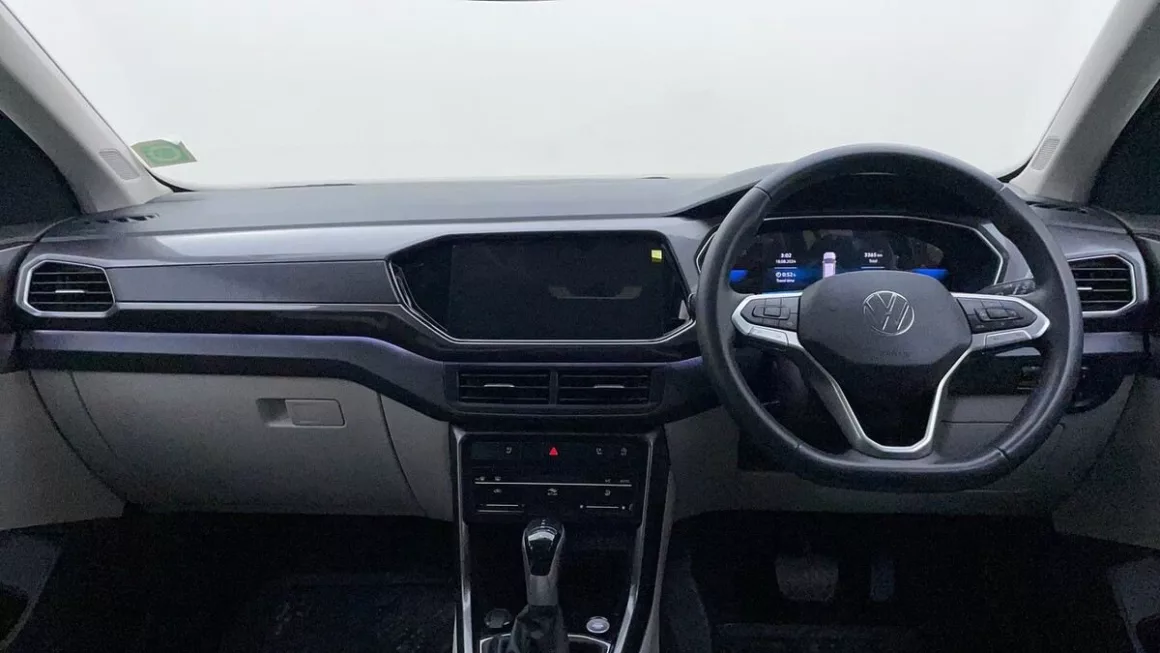
All the same, the Taigun feels more premium on the inside. Unlike the freestanding touchscreen on the Basalt, the Taigun gets a seamlessly integrated touchscreen into a body-coloured sharp-edged glossy panel on the dashboard that incorporates faux carbon-fibre inserts. The octagonal housing of the touchscreen is particularly interesting. In contrast to the Basalt, the Taigun brings a darker colour theme for the interior, which agrees well with its performance-oriented character. Both fabric and faux leather upholstery feel premium and the seats are aptly bolstered.
While the Taigun is not among the most feature-rich cars in its segment, it is still significantly ahead of the Basalt. Its advantages over the Basalt include ventilated and powered front seats, auto-dimming interior rear-view mirror, sunroof, and cruise control to name a few. Whereas, the Citroen Basalt features basic modern-day essentials such as automatic climate control, wireless Android Auto and Apple CarPlay connectivity, wireless charger, and others.
The Volkswagen Taigun feels more premium on the inside and is more feature-rich as compared to the Citroen Basalt.
Volkswagen Taigun vs Citroen Basalt: Safety Features
Volkswagen Taigun | Citroen Basalt | |
G-NCAP Safety Rating | 5-stars | Not tested |
Airbags | Six | Six |
ABS with EBD | Yes | Yes |
ESC | Yes | Yes |
Traction Control | Yes | Yes |
Automatic headlamps | Yes | No |
Rain-sensing Wipers | Yes | No |
Hill hold assist | Yes | Yes |
Hill descent control | No | No |
Rear sensors | Yes | Yes |
Rear parking camera | Yes | Yes |
ISOFIX Child seat anchor points | Yes | Yes |
ADAS | No | No |
German cars are known for their robustness and the Volkswagen Taigun is no exception. With a full 5-star G-NCAP safety rating under its belt, the Taigun is one of the safest cars in India. Moreover, it has more than enough safety features to ensure maximum safety. On the other hand, the Basalt is not as strongly built and offers body strength which can be called satisfactory at best. Nonetheless, it sports all the essential safety features such as six airbags as standard, ABS with EBD, ESC, hill-start assist, and more.
The Volkswagen Taigun is a far safer car than the Citroen Basalt.
Volkswagen Taigun vs Citroen Basalt: Price comparison
Volkswagen Taigun | Citroen Basalt | |
Base variants (Ex-Showroom) | Rs. 11.70 lakh | Rs 7.99 lakh |
Mid variants (Ex-Showroom) | Rs. 13.88 – 15.63 lakh | Rs 9.99 lakh |
Upper mid variants (Ex-Showroom) | Rs. 16.31 – 18.08 lakh | Rs 11.49 – 12.79 lakh |
Top variant | Rs. 16.77 – 20 lakh | Rs 12.28 – 13.83 lakh |
Pricing is the most decisive parameter, especially in this comparison, where the price of the range-topping variant of the Basalt is lower than the price of the starting price of the Taigun’s mid variants.
But even with the mid variants, the Taigun slightly surpasses the feature wealth of the top variant of the Basalt, due to advantages like the convenience of a 60:40 rear seat split, cooled glove box, and paddle shifters with the automatic variants. This makes the Taigun a better value-for-money offering in this comparison.
Also read: Comparison: Mahindra Thar Roxx vs Jeep Wrangler
Volkswagen Taigun vs Citroen Basalt: Summary
Overall, the Citroen Basalt is a capable Coupe SUV, especially concerning its price which almost matches the price of sub-4m compact SUVs. It should easily meet your needs if you can do without some upmarket features and want an affordable family car which drives and handles easily and delivers a pleasant ride quality. In addition to that, being the first mass-market Coupe SUV, it brings a unique road presence which is certain to turn many heads.
On the other hand, the Volkswagen Taigun is a more premium SUV and one of the best cars if you want a robust shield cocooning your family as they drive from place to place. On top of that, it is one of the best SUVs for driving fun and with its exhilarating character, it entertains the driver inside you. It definitely offers better value than the Basalt and if you are not a fan of Coupe SUVs, then you should go right ahead and pick a Taigun over a Basalt.
Volkswagen Taigun vs Citroen Basalt: FAQs
Among the VW Taigun and Citroen Basalt, which is larger?
Volkswagen Taigun is 4,221 mm long, 1,760 mm wide, 1,612 mm tall, and has a wheelbase of 2,651mm. Citroen Basalt is 4,352 mm long, 1,765 mm wide, 1,593 mm tall, and has a wheelbase of 2,651 mm. So, the Basalt is 131 mm longer and 5 mm wider than the Taigun, while the Taigun is 19 mm taller and rides 8 mm higher than the Basalt.
Among the Volkswagen Taigun and Citroen Basalt, which car is more powerful?
The 1-litre turbo petrol engine and 1.5-litre turbo petrol engine of the Volkswagen Taigun produce 115 PS and 150 PS respectively. Whereas, the 1.2-litre petrol engine of the Citroen Basalt produces 82 PS in naturally aspirated form and 110 PS in turbocharged form. Therefore, both engines of the Volkswagen Taigun are more powerful than the petrol engine of the Citroen Basalt.
Among the VW Taigun and the Citroen Basalt, which one drives better?
Since the Volkswagen Taigun is more powerful than the Citroen Basalt, it’s more exciting to drive. However, both cars handle exceptionally well and deliver excellent ride comfort.
Among the VW Taigun and the Citroen Basalt, which one is a better family car?
The Volkswagen Taigun is stronger, safer, and more premium and feature-rich than the Citroen Basalt and this makes it a better family car than the Basalt.
What types of automatic transmission systems are available in Volkswagen Taigun and Citroen Basalt?
The Volkswagen Taigun offers a 6-speed torque converter automatic and a 7-speed DSG automatic. Whereas, the Citroen Basalt offers a 6-speed torque converter automatic.
